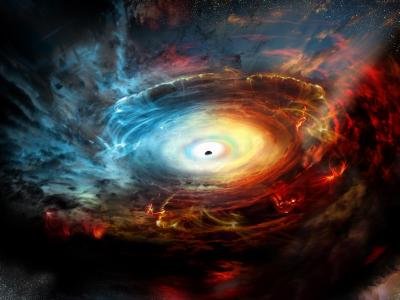The core of our cosmic neighborhood, a region located 27,000 light years from Earth, is one of the liveliest and most hostile areas of the galaxy.
In 2018 , one star bluish - white called S2 will only seventeen hours light heart of our galaxy at a speed of nearly 30 million kilometers per hour. Astronomers are prepared to study the phenomenon thanks to GRAVITY instrument , placed in the interferometer system of four telescopes Very Large Telescope of the European Southern Observatory in Chile. The idea is to determine the path followed by the star -this revolves around the galactic center with a period of sixteen years with a similar measure the position of an object on the moon accuracy with a margin of error of one centimeter . This is expected to understand a little better what happens in the core of the Milky Way .
Viewed from Earth on a summer night, this is where the short galaxy horizon to the east, in the constellation Sagittarius, hidden behind an impenetrable fog of interstellar gas and dust. Our planet is about 27,000 light years of the same . In the galactic whorl we found the oldest stars in the Milky Way, formed only 300 million years after the Big Bang and gas clouds that move more than 3.5 million kilometers per hour. Very close to them, in the very center, Sagittarius A *, a black superagujero of 4.1 million solar masses rises .
The study of the information obtained from the X - rays emitted by Sgr A * has allowed to know that this is about fifteen million kilometers , less than a quarter of the diameter of Mercury's orbit. How could it be otherwise, this high - energy emission has its own mystery: the intensity of X - rays emitted by the black hole is the fifth of what the theory predicts. But why ? One of the hypotheses that are handled is that the explosion of a supernova near 10,000 years ago swept most of the interstellar gas and dust in the region. But this is not the largest of the enigmas that still holds our galactic center. There is one that beats all: where does this black hole ?